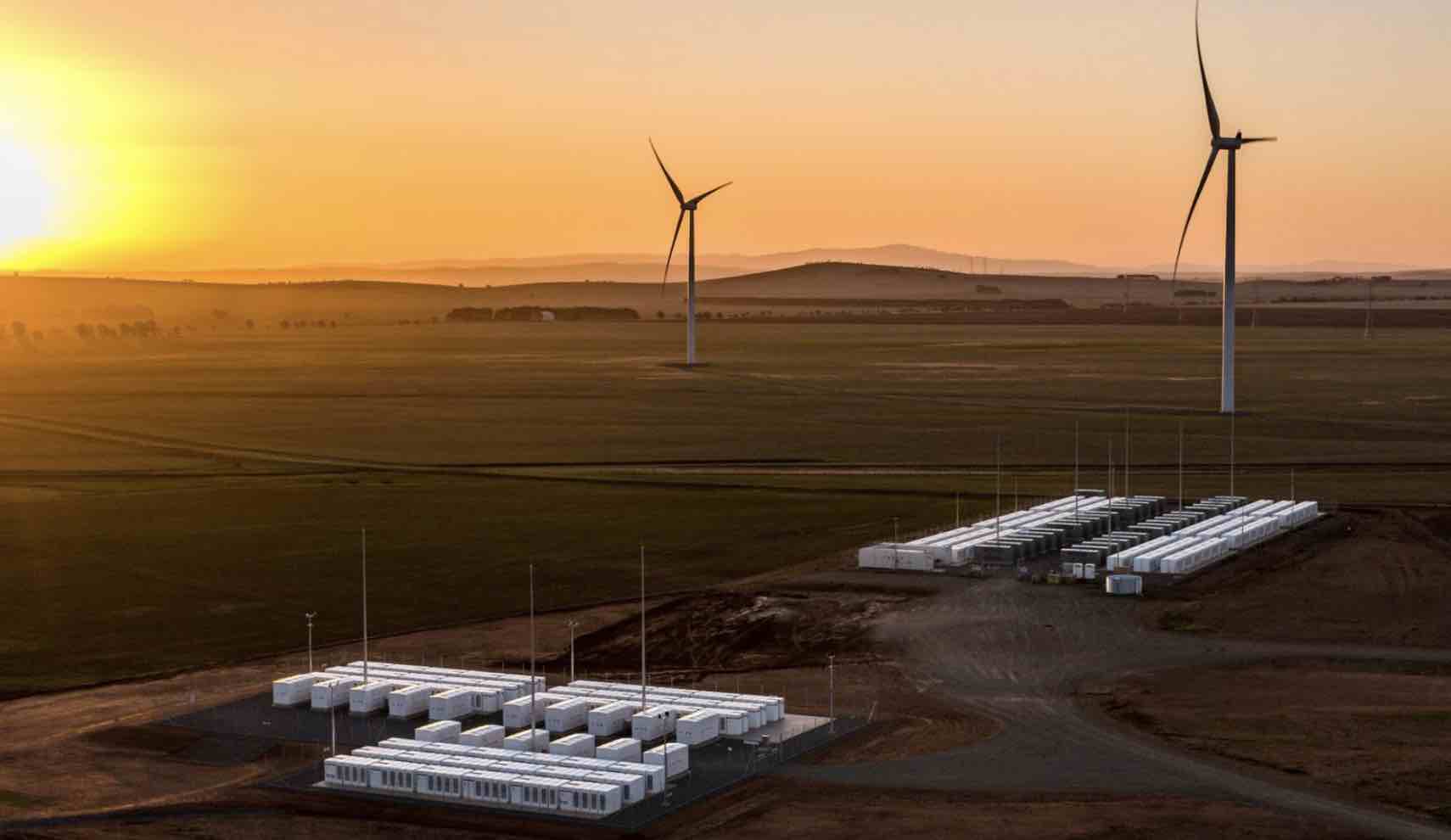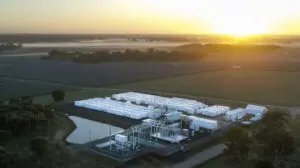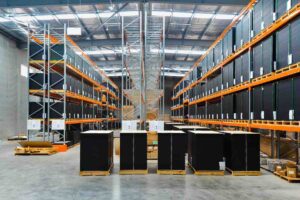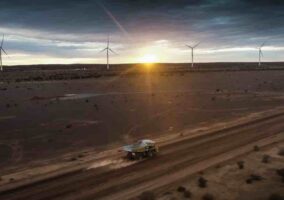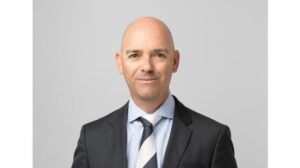The Hornsdale Power Reserve in South Australia, aka the “Tesla big battery”, has finally gained approval to become the first big battery in the world to deliver grid-scale inertia services.
The approval came from the Australian Energy Market Operator after nearly two years of trials and testing, and is considered to be another critical step towards managing a grid with 100 per cent renewables and no coal plants and gas generators in operation.
The Hornsdale battery, owned by Neoen and expanded to 150MW/193MWh in 2020 to help deliver these additional services, will be the first of many such batteries to operate with what are known as “advanced” or “grid forming” inverters.
These inverters are able to deliver many of the critical grid services usually provided by thermal power, but have required detailed testing to help manage the switch from large spinning machines to precise digital technology.
The Hornsdale battery uses Tesla’s “virtual machine mode” technology, and these will be replicated at the Wallgrove battery in NSW, the new Broken Hill battery and Darlington Point battery projects, and others to be supported by a $100 million grant scheme led by the Australian Renewable Energy Agency.
AEMO says grid forming inverters are critical to a successful transition from a coal based grid to one that could feature an average of more than 90 per cent wind and solar in little more than a decade, and 100 per cent “instant” renewables within three years.
“The strong collaboration with Neoen and supporting partners to develop an inertia-enabled grid-scale battery demonstrates what can be achieved to support Australia’s once-in-a-century energy transformation,” AEMO CEO Daniel Westerman, AEMO’s CEO, said in a statement.
The fact that the Hornsdale battery is the first to deliver such services at scale is no coincidence, as South Australia has the world’s leading share of wind and solar, with more 64 per cent provided by these “variable” renewable sources in the pst 12 months.
The Hornsdale battery will have the capacity to provide an estimated 2,000MWs of equivalent inertia, or around 15 per cent of the predicted shortfall in the state’s network, which serves over 1.7 million people and 150,000 businesses.
A minimum level of inertia, in conjunction with frequency control services that can also be provided by battery inverters, is needed both during normal operation of the electricity network and after major disturbances. Inertia has traditionally been provided by gas or coal fired generators.
“The closing of thermal power plants and increasing volumes of renewable energy are resulting in inertia shortfalls in the grid, a serious network issue that batteries are now able to overcome,” Neoen said in a statement.
“In addressing these challenges, this innovative solution represents a breakthrough of global significance.”
ARENA CEO Darren Miller says the pioneering work at Hornsdale will demonstrate the full technical capabilities of what batteries can achieve with advanced inverter technology installed.
“Improving the economics of energy storage is going to be key in our transition to high shares of renewable electricity. We congratulate Neoen and all the project partners on this great achievement and look forward to more grid-scale batteries becoming equipped with advanced inverter capabilities.”
Batteries can deliver multiple different services to the grid – energy arbitrage and storage, fast frequency response and frequency regulation – but their full “value stack” is often not rewarded, because no market has yet been created for some of those services.
The expansion of the Hornsdale battery and the inertia trials at Hornsdale were partly funded by the South Australia government ($15 million), ARENA ($8 million), and by the Clean Energy Finance Corporation through a long term debt facility, its first investment in a stand alone battery.
The joint statement said the landmark achievement was the result of two years of extensive trials, but in reality this consisted of detailed studies, reviews and analysis of a few hours of actual testing before the AEMO and the network operator ElectraNet could be satisfied with the outcome.
The inertia service is already being delivered by the big battery. But it will not be paid for the services as such, because there is still no market for it. The grants and finance from the government and agencies is designed to cover the cost.
“Hornsdale Power Reserve is an outstanding demonstration of the market-changing role of large-scale batteries in the race to net zero emissions,” CEFC boss Ian Learmonth said in a statement.
“There is no question that Australia needs a stronger, modernised electricity grid, supported by grid-scale storage, if we are to capitalise on the enormous benefits of our renewable energy resources.”
“We are proving that our assets can replace fossil fuels not only in the production and storage of electricity, but also through providing all the essential services that a power system needs to function, said Xavier Barbaro, the chairman and CEO of Neoen.
“The Hornsdale Power Reserve was revolutionary when we commissioned it back in 2017 and continues its pioneering role,” added Tom Koutsantonis, the South Australian energy minister, said in a statement.
“It is leading the innovation of inverter-based technologies – paving the way for more, much needed large scale storage projects both in Australia and beyond.
“Expanding the capabilities of the Hornsdale Power Reserve by activating Virtual Machine Mode, a first for the world, further demonstrates South Australia’s commitment to global leadership in the adoption and integration of renewable energy to improve grid stability and energy reliability, while bringing power prices down for all South Australians.”

